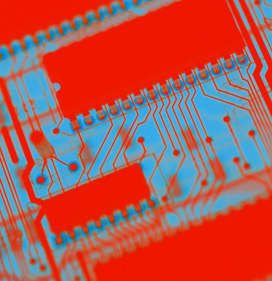The last several years in data recovery and data storage technology have seen faster flash storage, growth in adoption of hyper-converged storage and the proliferation of ransomware cases, according to the data recovery company Kroll Ontrack. In 2017, and beyond, look out for continued changes to technology used in data centers, more data encryption and an increased emphasis on enterprise information security, the firm says.
As our personal devices get smaller and are able to store even more data, so too do enterprise storage technologies. Flash continues to change the market at a blistering pace. While the cost of SSD continues to be higher than traditional storage, many enterprises are nevertheless taking a hybrid approach. At Kroll Ontrack, we have seen a 239 percent increase in the number of hybrid drives needing data recovery since 2014. Flash drives are often paired with more dated HDD technologies to save cost, but enterprises still reap the benefits of a storage technology that is faster, higher density and requires less power.
In its list of 2015 trends, Kroll Ontrack detailed hyper-converged systems as a leading innovation to IT architecture that consolidates storage resources via software run on any manufacturer’s hardware and predicting continued adoption in 2016. While there are not many years of data to draw on, there has been an increase in customer inquiries about hyper-converged storage and related recoveries. We are seeing that recovery from these complex systems often requires a custom solution because data is fully integrated into the unit making it difficult to gain sector-level access to the disks.
New storage configurations do not pose the only possible challenge when working with hyper-converged storage. While highly sophisticated, these newer systems have a more intuitive user interface and tend to be easier to set up and manage at first glance. As a result, organizations are employing less specialized individuals to operate hyper-converged storage systems – employees who may not have the depth of knowledge needed to solve more complex problems. This presents new challenges when backups need to be verified or when data loss occurs, for example. Nevertheless, look for enterprises to continue moving data to hyper-converged storage environments because of their many benefits.
Stories of ransomware and associated data loss were rampant in 2016, with anyone being a potential victim: hospitals, corporations, individuals and government entities were all exposed or lost data in these attacks. Wearable technology is especially vulnerable as there can be little to no real security on your device.
Jeff Pederson, senior manager for data recovery at Kroll Ontrack, recommends that if your data is compromised or stolen: “Turn to a trusted data recovery provider who is able to build a customized solution to recover your data without having to pay your victimizers. As data and devices continue to proliferate our lives in every way, know how to protect yourself. Set strong passwords and dispose of unneeded data. At Kroll Ontrack, we have a decryption process defined for 55 ransomware variants.”










